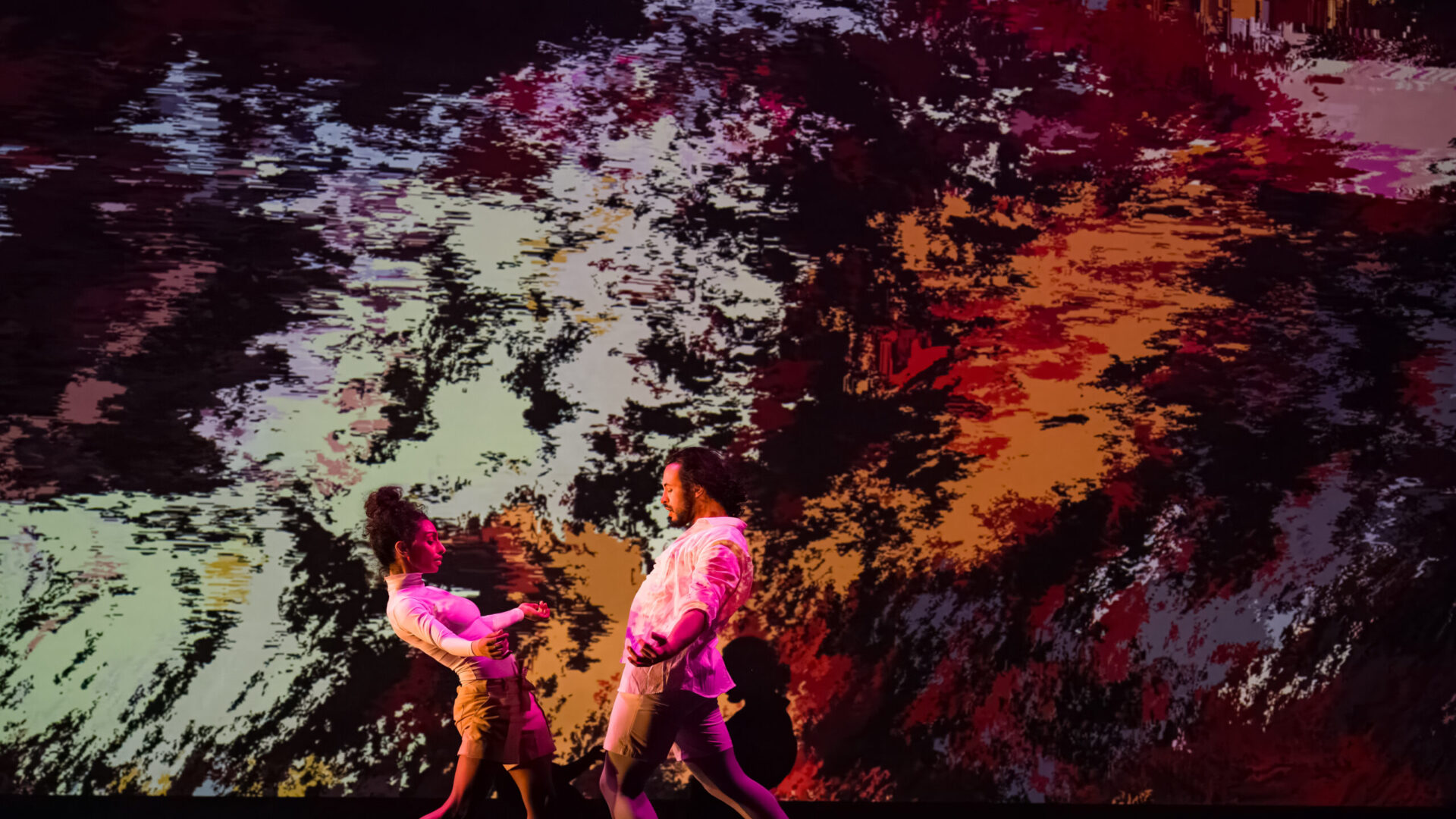Creating an interactive sound system for a climate-conscious dance performance
Tools: Ableton Live, Max for Live, Genki Wave, Suno, ElevenLabs
LOOP is a 30-minute interactive dance performance exploring our relationship with the climate emergency, created with choreographer Audrey Gaussiran and dancer Aymen Benkreira. The show premiered on August 14th, 2025 at Festival MOSAÏQUE in Laval, Quebec. Through humor, movement, and live audio manipulation, LOOP tackles environmental anxiety without falling into predictable or preachy territory—making it accessible and engaging for teen audiences. This marks my fourth collaboration with Audrey, following Mosaïco, Ctrl:N, and Fisheye.
LOOP centers around two contrasting characters navigating climate anxiety: Audrey, the neurotic and hyper-informed environmentalist, and Aymen, the laid-back and somewhat oblivious counterpart. Throughout the performance, they interact with “Siri”—a third AI character voiced through narration samples—who alternates between offering reassurance and delivering darkly humorous climate statistics. The show blends flamenco zapateo, Latin dance, urban dance styles, and beatbox with live audio looping to create a spiraling musical landscape that mirrors our environmental predicament.
For LOOP, I was responsible for all programming, sound design, music composition, and AI generation. The central challenge was creating an interactive audio system that would allow the dancers to perform autonomously—without requiring my presence as a technician during shows. Every sound, every loop, every transition had to be triggered and controlled by the performers themselves. All music and sound came from three sources: live-generated loops, pre-composed tracks, and AI-generated content using Suno and ElevenLabs.

The heart of LOOP‘s interactivity is the Genki Wave ring worn by Audrey, connected via Bluetooth to Ableton Live and custom Max for Live patches. The ring’s buttons trigger sound cues, scene changes, and narration samples, while its orientation data controls melodic parameters in certain moments.
Audio input came from Lark M2 wireless microphones, with one taped underneath Audrey’s flamenco shoes to capture and loop her footwork. The dancers also controlled elements through a LaunchControl XL and Launchpad, giving them direct manipulation over musical parameters while executing choreography.
The biggest technical challenge was designing a system robust enough to handle live performance unpredictability while giving the dancers creative freedom. With no screens or visual feedback during the show, they relied entirely on muscle memory and audio cues. Most cues in my Ableton session trigger multiple actions simultaneously—scene changes, loop recordings, effect processing—all carefully orchestrated to feel seamless.
The live-generated music sections were also pretty challenging. Using only Audrey’s beatbox and flamenco footwork as raw material, I developed extensive audio processing chains in Ableton and custom Max for Live patches to transform these percussive elements into engaging musical textures. The result is music that sounds urban and electronic while remaining anchored in flamenco rhythms—atonal, driving, and visceral.
Creatively, the challenge was maintaining accessibility and humor while tackling a heavy subject. By intentionally showing the “mechanics”—letting the audience see the MIDI controllers, the ring gestures, the loop-building process—we demystified the technology and kept the tone playful rather than overly polished.

LOOP was developed through multiple residencies between December 2024 and August 2025. After our initial work in Laval, we held two creative residencies at Théâtre aux Écuries in Montréal where we refined the interactive system and honed the show’s structure. Our final residency took place at Stone & Sky on Pelee Island, Ontario in early August 2025, culminating in a preview performance before the official premiere at Festival MOSAÏQUE on August 14th.
LOOP demonstrates how technology, humor, and movement can make difficult conversations more accessible. By building a fully autonomous performance system and empowering the dancers with creative control, we created a show that feels spontaneous and alive—even as every technical detail was meticulously planned. The show can be performed in French or English, making it adaptable for diverse audiences.
This project pushed my skills in interactive system design, real-time audio processing, and AI integration while reinforcing my belief that the most effective art about serious topics doesn’t take itself too seriously.
